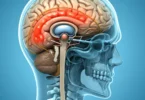Acromegaly Or Hyperpituitarism
Acromegaly is hormonal and also genetic disease which lead to Type 3 diabetes. Acromegaly or Hyperpituitarism indicates a pathological change of growth by a chronic somatotropin hormone. Acromegaly is a rare disorder, which is associated with an excess of growth hormone known as Somatotropin.Tumor of the pituitary gland is one of the main reason of hormonal over production so it is also related with genetic disorder. Acromegaly result in,increase in hands, feet, nose size, joint pain, hyperglycemia, hypertension and heart failure. The standard treatment is surgical removal of the tumor.The disease usually occure between the 45 t0 55 year year of the age. Acomegaly if occurred during pubertal growth may lead to gigantism.
Acromegaly Lead To Type 3 Diabetes
In acromegaly, there is an excess of growth hormone. This hormone leads to increased gluconeogenesis in the liver (gluconeogenesis), whereby the blood glucose level rises. In addition, the growth hormone promotes insulin resistance of the cells, which can also lead to diabetes type 3. In most cases a benign tumor of the pituitary gland (the hypophysis) is responsible for the excess of the growth hormone.
Causes Of Acomegaly
- Systemically through the increased secretion of growth hormone
- The most common cause is a pituitary tumor (adenoma ).
- Tumors of the hypothalamus with excessive release of somatotropin hormone
- Ectopic production of hormone Somoatotropin by forming tumors
Symptoms Of Acromegaly
Symptoms of acromegaly initially remain inconspicuous. The symptoms are nonspecific and are developing slowly. Therefore, the disease is usually detected late. From the onset of symptoms to diagnosis often takes several years. An excess of somatotropin results in children with open epiphyses and in adulthood with closed epiphyses.
- Hypophysenadenome
- Compression of cranial nerves
- Blurred vision / visual loss
- Headache
- Overgrowth of extremities (fingers, hands, toes, nose, chin, jaw, bulging eyes and cheekbones)
- Coarsening of facial features
- Tooth spaces
- Gigantism
- Articular cartilage growths (arthrosis)
- Carpal tunnel syndrome
- Tingling in the hands and feet
- Joint and muscle pain
- Strong sweating (hyperhidrosis)
- Increase in skin thickness
- Acne and Oily Skin
- Fibroma (mesenchymal tumor)
- Kolonpolype
- Hypertension
- Ventricular hypertrophy
- Cardiomyopathy
- Heart failure
- Enlargement of the heart (cardiomegaly)
- Sleep disorders
- Nighttime breathing pauses (sleep apnea syndrome)
- Enlargement of the thyroid, tongue, salivary glands, liver, kidney, prostate and spleen)
- Decrease in libido and potency
- Amenorrhea and galactorrhea
- Decreased glucose tolerance, insulin resistance, or diabetes mellitus
- Hypertriglyceridemia
- Hypercalciuria
- Increased aldosterone levels
- Decreased renin
- Hypertrichosis
- Euthyroid goiter diffuse
- Water retention
- Increase in weight
- Psychological changes (fatigue, mood lability)
Complications
- Hypertension
- Circulatory disorders of the heart and brain
- Diabetes Mellitus
- Nighttime breathing pauses (sleep apnea syndrome)
Treatments Of Acromegaly
Surgical Removal Of The Tumor:
The surgery is performed through the nose and the sphenoid sinus under general anesthesia. The chances of recovery depend primarily on the size of the tumor. For tumors that are only partially or not removable by surgery, radiotherapy is used. The success will come only after many years. A complete cure is usually not reached, so additional medications must be taken. A common complication of irradiation is in a hypopituitarism, which makes a hormone replacement therapy necessary.
Drug Therapy
Somatostatin Analogues (Octreotide, Lanreotide):
Suppressing the somatotropin secretion by binding to the somatostatin receptor. Somatostatin analogs are applied after surgery or radiotherapy.
Growth Hormone Receptor Antagonist (Pegvisomant):
They bind with the growth hormone receptor to block the effects of GH.
Dopamine Agonists (Bromocriptine, Cabergoline):
Reduction of the somatotropin secretion. The dopamine agonist therapy in combination with somatostatin analogues shows positive effects when treating acromegaly.






